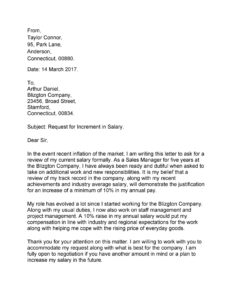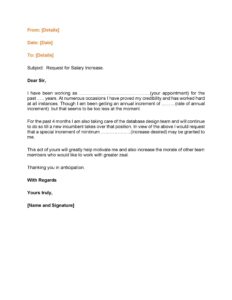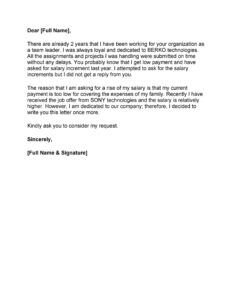Utilizing a systematic method for pursuing compensation adjustments can significantly increase the likelihood of a favorable outcome. A well-crafted follow-up reinforces the value proposition presented in the original request and keeps the discussion active. This proactive approach showcases professionalism and dedication, which can positively influence management’s perception. Moreover, it provides an opportunity to address any outstanding questions or concerns and reiterate the rationale behind the proposed adjustment.
This article will further explore the components of effective communication strategies for pursuing compensation adjustments, including appropriate timelines, persuasive language, and strategies for navigating potential challenges. Examples and practical advice will be provided to empower individuals seeking to advocate for their professional worth.
Key Components of a Compensation Follow-Up Framework
Effective follow-up regarding a compensation adjustment proposal requires a structured approach. Several key elements contribute to a persuasive and professional communication strategy.
1: Subject Line Clarity: A concise and informative subject line immediately clarifies the email’s purpose, ensuring it receives prompt attention. Examples include “Following Up: Compensation Discussion” or “Checking In: Salary Review Request.”
2: Reaffirming Value: The follow-up should reiterate the key contributions and accomplishments that justify the proposed adjustment. Quantifiable achievements and demonstrable value should be emphasized.
3: Reference to Initial Request: Briefly referencing the initial request provides context and ensures continuity in the conversation. Mentioning the date of the original request can be helpful.
4: Expressing Continued Enthusiasm: Maintaining a positive and enthusiastic tone demonstrates ongoing commitment and reinforces interest in the position and the organization.
5: Proposing Next Steps: Suggesting a follow-up meeting or call provides a concrete action item and facilitates further discussion.
6: Maintaining Professionalism: A respectful and professional tone is crucial throughout the communication. Avoid demanding language or emotional appeals.
7: Concise and Focused Messaging: Keeping the communication brief and to the point respects the recipient’s time and ensures the key message is clearly conveyed.
A well-structured approach to requesting compensation adjustments combines clear communication, a positive tone, and a concise presentation of relevant accomplishments and contributions. These components create a compelling narrative that supports the proposed adjustment and encourages a favorable outcome.
How to Create a Compensation Adjustment Follow-Up Communication
Creating a structured communication for following up on a compensation adjustment request ensures professionalism and clarity. A well-crafted message can significantly influence outcomes.
1: Subject Line Specificity: Begin with a clear, concise subject line indicating the email’s purpose. “Compensation Discussion Follow-Up” or “Salary Review Request – Check-in” are suitable examples.
2: Opening with Gratitude and Context: Express appreciation for the initial consideration and briefly reference the previous conversation, including the date of the original request.
3: Reinforce Value Proposition: Briefly reiterate key accomplishments, contributions, and quantifiable achievements since the initial request or last performance review. Highlight alignment with company objectives.
4: Restate Desired Outcome: Clearly state the desired compensation adjustment. This ensures clarity and leaves no room for misinterpretation.
5: Propose Next Steps: Suggest a convenient time for a brief meeting or call to discuss the matter further. This demonstrates proactivity and facilitates continued dialogue.
6: Maintain Professionalism and Gratitude: Conclude by expressing continued enthusiasm and gratitude for the opportunity. Maintain a respectful and professional tone throughout the communication.
7: Proofread Carefully: Ensure the communication is free of grammatical errors and typos. A polished message reflects professionalism and attention to detail.
8: Strategic Timing: Consider the timing of the follow-up. Avoid sending the email too soon or too late. A follow-up within one to two weeks after the initial request, or as advised by company policy, is generally appropriate.
A thoughtful approach to follow-up communications demonstrates professionalism, reinforces the value proposition, and facilitates productive conversations regarding compensation adjustments.
Strategic implementation of structured frameworks for pursuing compensation adjustments offers a significant advantage in navigating these crucial career conversations. Methodical approaches, incorporating clear communication, concise value reaffirmation, and proactive follow-up, empower individuals to effectively advocate for their professional worth. These frameworks provide valuable guidance, enabling professionals to approach compensation discussions with confidence and clarity, thereby maximizing the potential for successful outcomes.
Cultivating these skills benefits both individual career progression and overall workplace communication dynamics. Open and transparent dialogue regarding compensation fosters a culture of mutual respect and value recognition, ultimately contributing to a more productive and equitable professional environment. Investing time and effort in mastering these communication strategies yields substantial long-term rewards.



